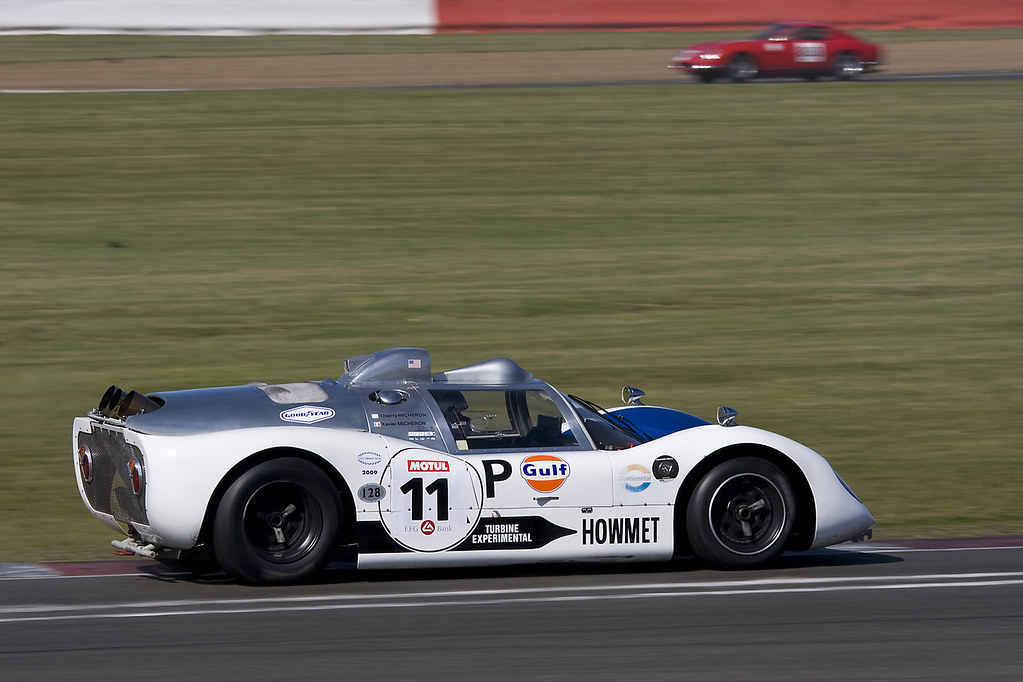War surplus served as the catalyst that inspired automakers and engineers to equip cars with more powerful aircraft engines, aiming to achieve greater performance in the relentless pursuit of speed.
In the early days, adaptations using piston engines resulted in some of the fastest and most notable land speed record attempts.
These aircraft engines were readily available and shared the same fundamental internal combustion design as car engines, making installation relatively straightforward.
As technology advanced and speeds increased, the shift moved toward turbine and jet engines, which offered significantly more power and velocity. However, the use of jet engines in particular marked the point where the power unit no longer drove the wheels directly.
10. Brutus – Thirsty, Loud & Fire Spitting
Those concerned with fuel efficiency should probably avert their gaze Brutus, equipped with a massive 47-liter BMW aircraft engine producing 550hp, delivers a staggering fuel economy of just 2.8mpg.
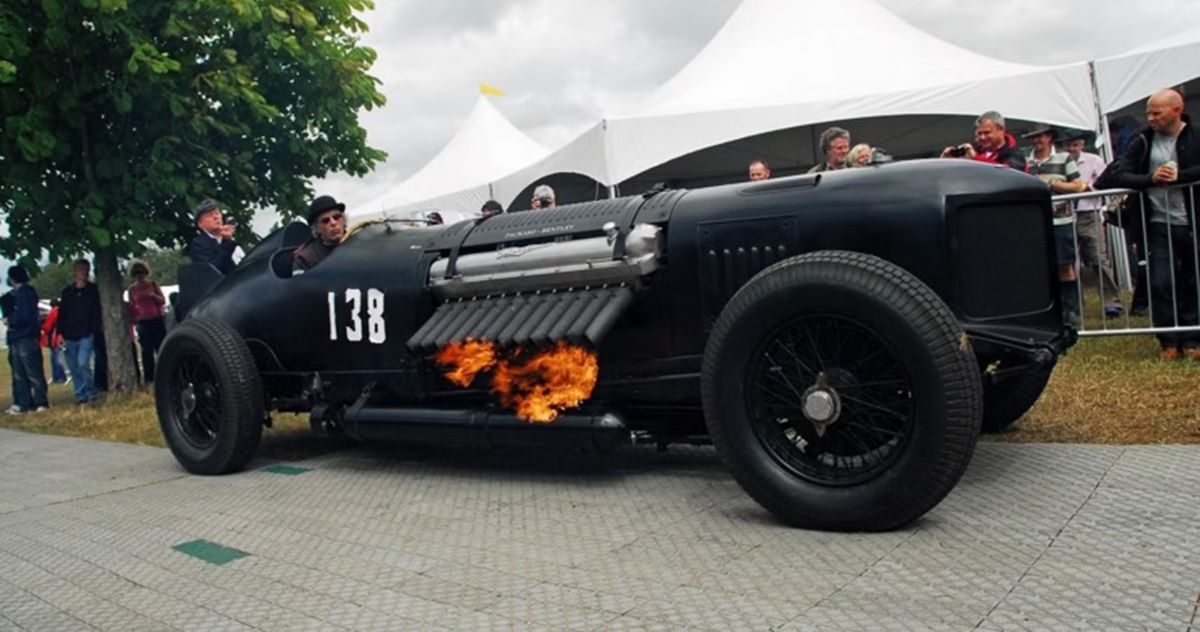
Despite their massive displacement, early aviation engines weren’t especially powerful. This works in Brutus’ favor when paired with its vintage 1907 chassis and chain drive.
Although its rated output is 550hp for continuous use, Brutus is capable of short bursts at higher engine speeds, generating up to 750hp.
If you thought the McLaren F1 was the wildest car ever to feature a BMW V12, then chances are you haven’t come across Brutus.
Car enthusiasts can’t resist a good custom build—especially one involving an over-the-top engine swap.
Sure, something like a 1967 Plymouth Belvedere outfitted with a Hellcat engine qualifies as extreme, but a century-old fire truck with no front brakes and a massive aircraft engine redefines the meaning of outrageous.
To be clear, the idea of putting aircraft engines into custom cars isn’t new. During the interwar period, thrill-seekers frequently snapped up decommissioned aircraft powerplants and shoehorned them into modified car chassis—either to chase land speed records or simply to create machines that defied conventional logic.
Even so, as you’re about to find out, Brutus is in a league of its own when it comes to unhinged engineering.
As mentioned earlier, the interwar years saw a surge of hobbyists purchasing cheap aircraft engines that found new life on extensively altered automobile frames.
Germany was a key market for these powerplants, as post-WWI restrictions barred the nation from maintaining a military air force.
Over the years, builders—particularly in the UK—have created numerous jaw-dropping one-offs featuring aircraft engines.
One of the most well-known examples is the Napier-Railton, a bespoke machine powered by a 24-liter W12 Napier XIA aero engine. Commissioned in 1933 by John Cobb, this beast shattered 47 global speed records at venues like Brooklands, Autodrome de Linas-Montlhéry, and the Bonneville Salt Flats.
Fast forward to the late 1990s, when a group of German enthusiasts decided to build a vintage-style one-off that would dwarf even the Napier-Railton in sheer audacity.
The project took shape in a small workshop at the Technik Museum in Sinsheim, Germany. Due to limited funding, construction dragged on for nearly eight years before the vehicle, dubbed Brutus, was finally completed.
True to form, the team relied solely on vintage components. The first major piece they acquired was a 1907–1908 American LaFrance fire truck chassis, which had somehow made its way to Europe.
Its heavy-duty frame and massive 178-inch (4,500 mm) wheelbase made it the ideal foundation.
The skeleton was then cloaked in a hand-formed steel body, styled to resemble the high-speed racing cars of the early 20th century.
The crown jewel of this fire truck-turned-monstrous custom is, of course, its engine.
Built by BMW, the water-cooled V12 displaces a staggering 46.92 liters (2,863.23 cubic inches). For its time, it was noted for being relatively light and compact.
This advanced motor features six main and auxiliary connecting rods. The massive cylinders on one side each measure four liters, while those on the opposite bank displace 3.82 liters apiece.
This gargantuan engine produced about 550 horsepower in sustained operation but could be tuned for short bursts up to 750 horsepower.
All of this muscle was sent to the narrow rear wheels via the original three-speed chain-drive transmission from the American LaFrance fire truck.
As you’d expect, such an oversized aircraft engine guzzles fuel at an outrageous rate. According to the museum that currently owns Brutus, the BMW V12 consumes fuel at an average rate of 1 liter per kilometer—or 2.8 miles per gallon.
In keeping with its era and purpose, Brutus was built with rear brakes only. The logic was simple: the car was designed for speed on long straight stretches, where stopping distance wasn’t a top priority.
As for safety features—there really weren’t any. The car doesn’t even have a bulkhead; the driver is separated from the enormous V12 by nothing more than a metal mesh screen. As a result, heat and any possible fuel or oil leaks flow directly into the cockpit.
Understandably, piloting Brutus isn’t for the faint of heart. Still, several daring enthusiasts have taken it for a drive over the years.
Among them, vintage race car driver and renowned car collector Roger Collings stood out as the boldest. He drove Brutus on the Bosch test track in Boxberg, pushing it beyond 124.3 mph (200 kph).
Also Read: Top 10 Worst and 10 Best Trucks for Towing
9. Howmet TX – 2 Times Race Winner
While other manufacturers previously experimented with turbine-powered race cars, public disinterest and mechanical reliability issues hindered success.
However, the Howmet TX proved different. It combined a specially crafted space frame chassis with a prototype TS-325 turbine engine, originally designed for a now-defunct helicopter project.
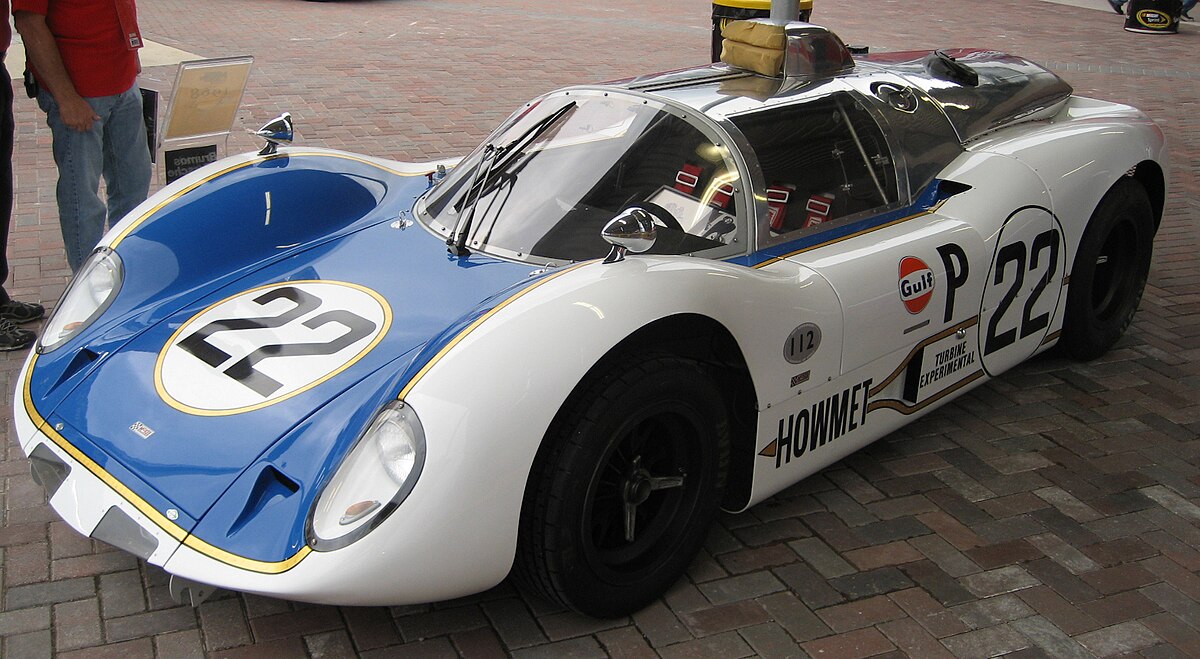
Despite its relatively small 3-liter capacity, the mid-mounted turbine spun at a staggering 57,000rpm, delivering 350hp to the rear wheels.
Entered in 11 races under the Howmet TX name, it achieved two pole positions and secured two race victories, making it the only turbine-powered car ever to win a race.
The TX was the result of a collaboration between Ray Heppenstall and Bob McKee of McKee Engineering. Built on a chassis developed by McKee Engineering, the car was powered by a turbine engine loaned from Continental Aviation & Engineering.
Heppenstall conceived the idea for the TX after witnessing the Rover-BRM, driven by Graham Hill and Jackie Stewart, compete at Le Mans in the early 1960s.
That inspiration was later reinforced by the STP-Paxton Turbocar, which nearly claimed victory at the iconic Indianapolis 500. Piloted by Parnelli Jones, the Turbocar led the race and covered 482 of the 500 miles before retiring due to mechanical failure.
The TX featured two turbines provided by Continental, which had originally been developed for a military helicopter program that was eventually cancelled.
Together, the turbines weighed just 77 kilograms, yet delivered 350 bhp and a staggering 880 Nm of torque. Their maximum rotational speed? An astonishing 57,000 RPM.
To counteract the typical lag associated with turbine engines spooling up, the engineers implemented a wastegate system. This significantly improved throttle response and gave the TX a unique triple-exhaust configuration at the rear.
Built to conform to the FIA’s Group 6 Sports Prototype regulations, the TX’s chassis was a mid-engine design developed by Bob McKee and McKee Engineering. It was equipped with gullwing doors that enclosed the turbine unit positioned behind the driver.
While there were no unconventional suspension or braking systems involved—just standard double wishbones and disc brakes on all four corners—drivers often applied throttle during braking to stabilize the car and maintain turbine RPMs, a necessity due to the engine’s spool time.
Two Howmet TX chassis were completed and brought to the 1968 24 Hours of Daytona. One was used for promotional purposes before the race, while the other—chassis GTP2—competed in the race, driven by Heppenstall, Dick Thompson, and Ed Lowther.
The team qualified seventh overall and managed to reach third place before a stuck wastegate sent too much power to the wheels mid-corner, causing a spin and crash.
The team regrouped and entered the 12 Hours of Sebring, where the TX ran closely behind a Porsche 907 and a Ford GT40. However, another wastegate malfunction forced another retirement.
Their brief European campaign began with the BOAC 500 at Brands Hatch, but ended prematurely after just seven laps due to yet another wastegate failure. At the following round in Oulton Park, it wasn’t the wastegate that failed but the starter motor, which broke down during a pit stop and led to retirement once more.
Choosing to return to the United States, the team entered the SCCA National Championship rather than continue in Europe. Once they resolved their mechanical gremlins, performance improved significantly.
Heppenstall secured second place at the Vandergraft Trophy in West Virginia, setting a new lap record in the process. A few rounds later, after recovering from another earlier retirement, the Howmet TX arrived at the Heart of Dixie race in Alabama.
The car secured pole position in the sprint race leading up to the main event. From pole, it ran flawlessly and dominated the race—claiming the first-ever win for a turbine-powered race car.
Building on their Alabama success, the team entered the TX in the Marlboro 300, with Dick Thompson again teaming up with Heppenstall. After winning the qualifying sprint race, the duo led every lap of the main event from pole position—earning yet another victory for the revolutionary turbine-powered machine.
8. Lotus 56 Indy Car – Innovative Design
Already renowned for their innovation in Formula racing, Team Lotus entered the 1968 Indianapolis 500 with three turbine-powered Lotus 56 race cars.
Continuing their tradition of engineering excellence, Lotus developed the 56 using the compact Pratt & Whitney ST6 turbine engine, which produced 430hp.
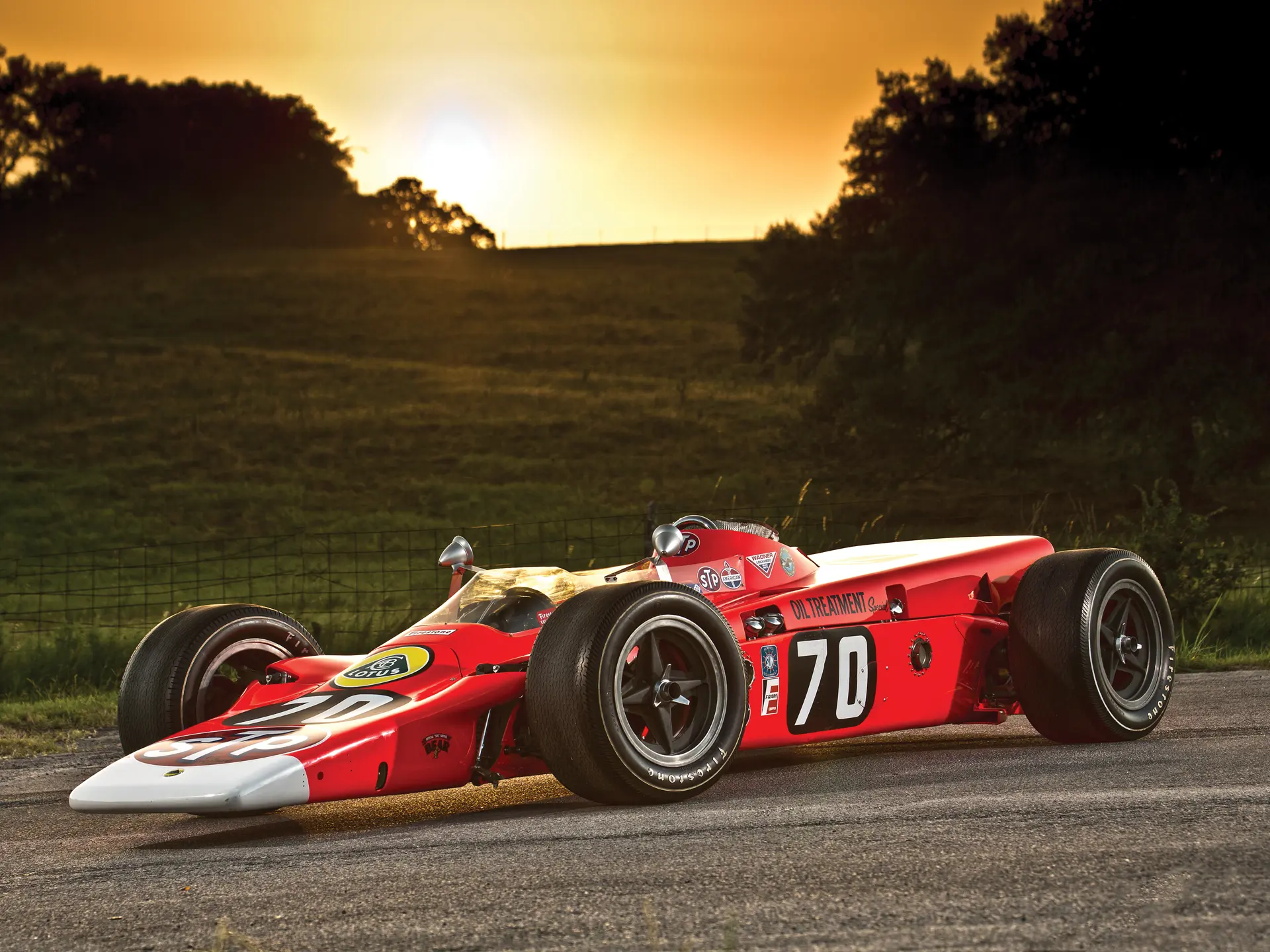
This engine was mounted in a lightweight, aerodynamic, four-wheel-drive chassis. Despite the promising design, all three cars failed to finish the race.
However, the knowledge gained from this effort proved instrumental, as the Lotus 56 would later influence the team’s development of successful Formula One cars.
7. 1934 Rolls-Royce Phantom II – V12 Merlin Power
While Rolls-Royce is best known for crafting some of the world’s most luxurious vehicles, its true legacy lies in the development of aircraft engines used in some of history’s greatest planes.
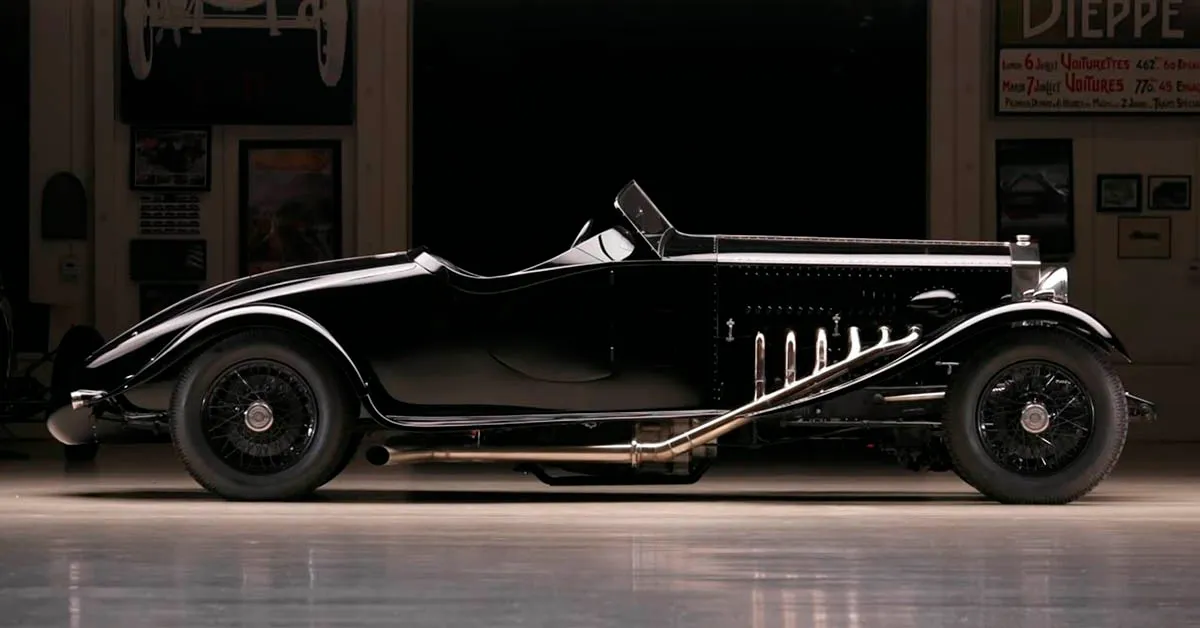
Jay Leno’s 1934 Rolls-Royce Phantom II is equipped with the same V12 Merlin engine that powered the legendary Supermarine Spitfire, generating an impressive 1,700hp.
Originally, this vehicle was never intended to house such a powerful engine, but it was later upgraded with a more suitable manual transmission to accommodate the massive increase in power.
When it comes to legendary engines, performance isn’t the only measure of greatness. The Renault Cléon-Fonte “Sierra,” Chevrolet’s Small-Block, and Ferrari’s V12 Colombo all hold iconic status.
But even those engineering marvels pale in comparison when we consider the engine that helped win the Second World War.
That distinction belongs to the Rolls-Royce Merlin—an engineering titan with 27 liters of displacement and 12 cylinders, each piston moving a staggering 2 liters of air and fuel. This powerhouse propelled legendary aircraft such as the Spitfire and the Hurricane into combat.
And that’s not even accounting for the Packard-built version—the V-1650—which powered the American P-51 Mustang. In every sense, this engine represents one of the highest achievements of Anglo-Saxon engineering, playing a pivotal role in the defining air battles of WWII.
Nearly 150,000 units were produced and served for decades across various air forces. As a result, it’s not uncommon to still see Merlin engines flying today, especially during military commemorations.
But… to see one mounted on a car chassis? As the old bullfighter’s saying goes, “There are people pa’tó,” and one of those people is Jay Leno.
In one of his recent episodes, Leno unveiled a 1934 Rolls-Royce fitted with a Merlin V12 engine—a handmade, multi-year build that redefines what it means to be a restomod. If we were to call it one, it would certainly rank among the most astonishing in recent years.
The concept of fitting aircraft engines into cars isn’t new. Historically, there have been two main approaches.
On one side, you have the top-speed record chasers—a trend particularly popular up until the 1930s. This path gave birth to machines like the Botafogo and the Mephistopheles, both of which featured FIAT A.12 aircraft engines.
On the other end are high-end, drivable vehicles built with more practical intentions. A prime example is the 1919 Hispano-Suiza H6, powered by a V12 originally designed by Marc Birkigt for the British SE5a fighter—though the engine was halved to a six-cylinder configuration.
What does this tell us? Simply put, when dealing with the massive torque produced by aircraft engines, you need a transmission that’s built like a tank.
This was exactly the main challenge Jay Leno faced in realizing this project. He acquired the vehicle in England around 30 years ago—what was then an unfinished build that had a Merlin V12 bolted onto a Rolls-Royce Phantom II chassis, linked to a Jaguar XJ120 transmission.
That gearbox, unsurprisingly, didn’t last. The moment Jay Leno shifted into second gear, the immense 2300 Nm of torque shattered it instantly.
To put that into perspective, the modern Ferrari LaFerrari produces 700 Nm of torque—less than a third of what the Merlin V12 unleashes.
Such power could only be tamed using the New Venture Gear 5600 six-speed manual transmission—the same robust unit found in the Dodge RAM 3500 heavy-duty pickup.
The specs are jaw-dropping, but as Leno puts it during the test, “The push feels like the very hand of God is pushing you.” Keep in mind, the engine in this setup is limited to “just” 1,000 horsepower.
Although this 1934 Rolls-Royce V12 Merlin looks like something straight out of the pre-war era, many of its components are entirely modern.
That’s because its final construction spanned over 11 years, with serious work beginning in 2008. As a result, in addition to the modern transmission, it now features contemporary brake discs on all four wheels.
It was a wise choice, considering the car’s total weight tips the scales at 2,180 kilograms—nearly 800 kg of which comes from the Merlin engine alone.
To address some power delivery issues, the engine uses four Weber carburetors that were custom-made using 3D printing technology. The build also includes reinforced tires and a revamped cooling system, among other modern upgrades.
All of this is wrapped in a sleek, custom-made aluminum body that was purpose-built for the car. The end result is a jaw-dropping restomod—both visually and mechanically—that manages to channel the monstrous torque of an aircraft engine into the chassis of a Rolls-Royce Phantom II.
And if the visuals don’t already make a statement, just listen to it in motion. Its sound is unmistakable: the thunderous roar of a legendary Spitfire preparing to soar into the Battle of Britain.
6. Plymouth Radial Air Truck – 1930s Retro Styled
Most front-engined cars fitted with aircraft engines typically utilize in-line V12 motors, which makes the installation process relatively straightforward. However, this 1939 Plymouth stands out by employing a radial engine, giving it a distinct and eye-catching appearance.
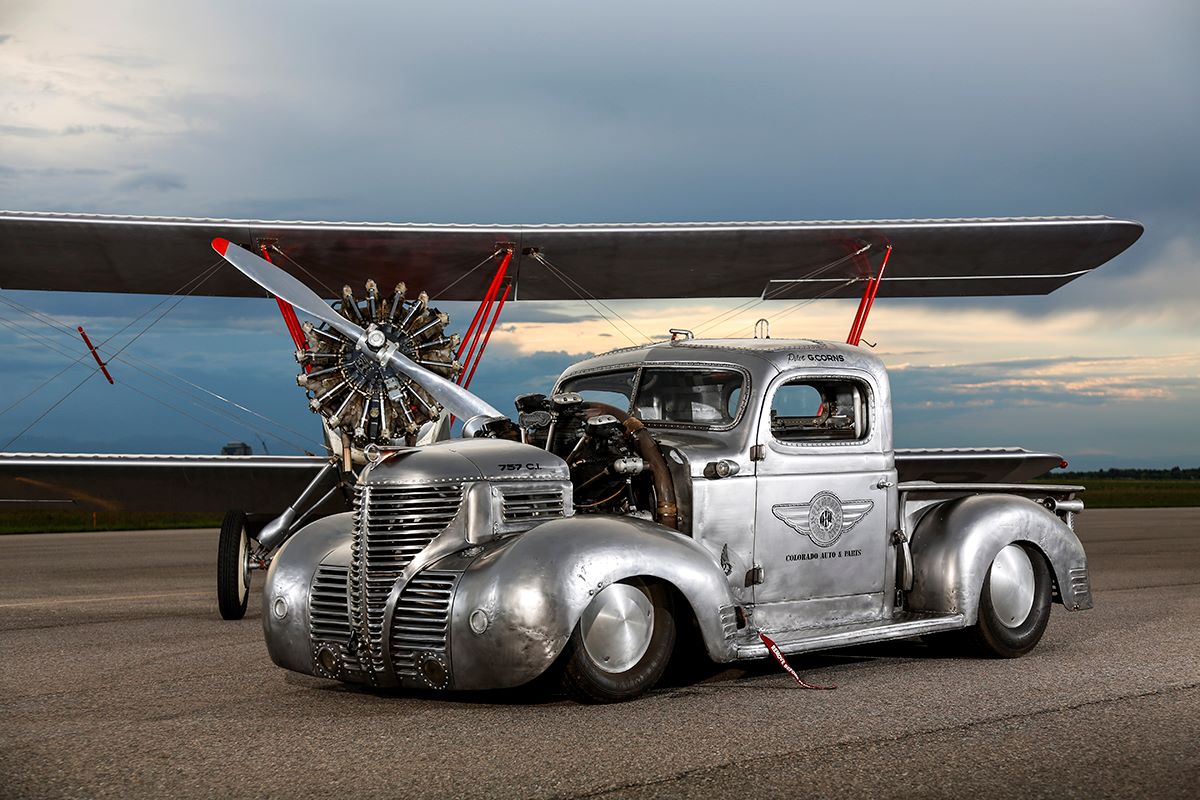
Positioned where the hood would normally be is a Jacobs R-755 radial engine originally used in a Cessna, delivering 300hp through a belt-driven automatic transmission.
Its exterior styling takes heavy inspiration from classic aviation, featuring riveted aluminum body panels a design theme that extends into the cab for a cohesive retro look.
Also Read: 10 Best V6 Sports Cars That Don’t Sacrifice Reliability
5. Bloodhound LSR – Aiming For 1,000mph
UK-based Grafton LSR is now in charge of reviving and pushing forward the Bloodhound project, with the ambitious goal of shattering the current land speed record and achieving an incredible 1,000mph.
To accomplish this, the team has outfitted Bloodhound with a Rolls-Royce EJ200 turbofan engine, originally developed for the Eurofighter aircraft, capable of producing 21,000 pounds of thrust.
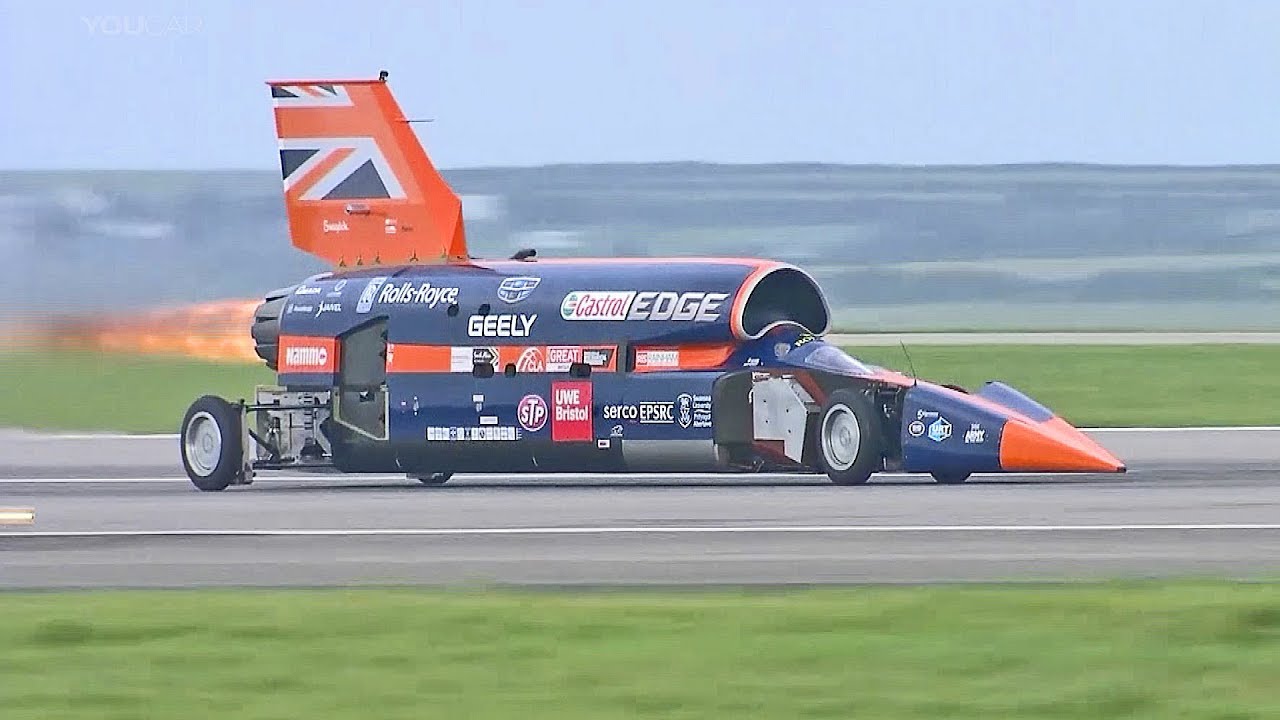
This power propels the car to 650mph, at which point a secondary rocket motor is engaged to generate the remaining thrust needed to hit 1,000mph.
Currently, the Bloodhound LSR remains in its development phase, having already surpassed speeds of 600mph using only the EJ200 turbofan engine.
4. Tucker 48 – Rare Limited Production Car
While most vehicles equipped with aircraft engines are either purpose-built for racing or created by enthusiasts as unique, one-off builds, the Tucker 48 stands out as one of the few that was manufactured in limited production numbers.
Initially, Tucker intended to power the Tucker 48 with an in-house developed engine. However, due to its insufficient power output and high oil pressure demands, the company was forced to seek an alternative.
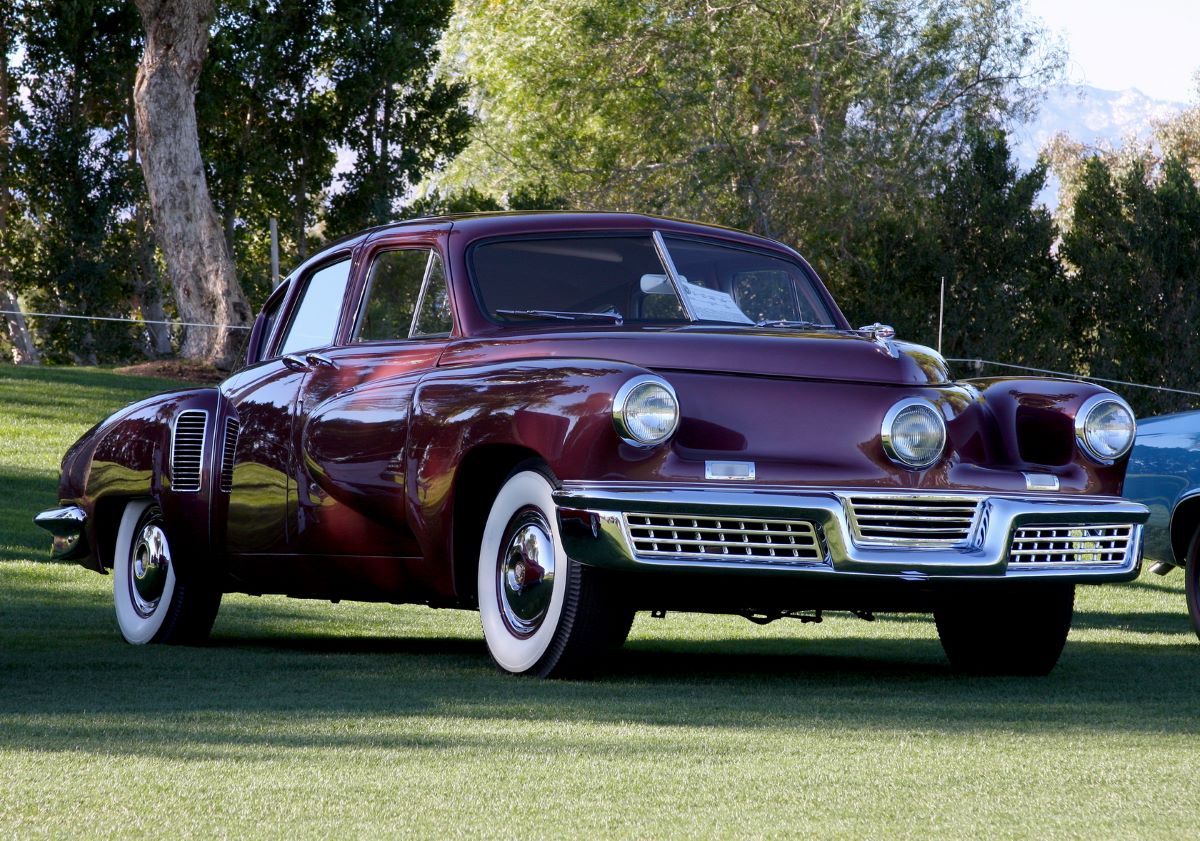
They ultimately chose the Franklin 0-335 six-cylinder engine, modified for water cooling, which delivered the 160hp promised by designer Preston Tucker.
The car was produced only during the year 1948, which is reflected in its name, with just 50 units ever completed.
3. Vampire Jet Car – UK LSR Holder (Once)
In a 2006 episode of BBC’s Top Gear, the Vampire Jet Car was featured as presenter Richard Hammond attempted to break the British land speed record. During the run, a catastrophic tire failure caused the car to roll multiple times.

Powered by a Rolls-Royce Orpheus jet engine, Vampire produced 4,500 pounds of thrust, enabling it to reach 272mph in just six seconds. Its estimated top speed was 370mph, and during Hammond’s run, the car hit 306mph.
Although destroyed in the crash, the remains of Vampire were later sold on the auction site eBay.
2. Packard Royal Streamliner – Frequent Gas Stops Required
The Packard Royal Streamliner not only draws its engine heritage from aviation, but its design also reflects the sleek, aircraft-inspired body construction made from riveted aluminum panels.
In an unusual choice, the vehicle was equipped with a marine version of the Packard V12 aircraft engine, which led to more complications than anticipated.

The cooling system required four radiators and 25 gallons of coolant to manage the engine’s demands. Producing 1,600hp and an impressive 3,000lbs of torque, the engine consumes approximately 100 gallons of fuel for every 150 miles traveled.
The Packard Royal Streamliner Roadster is a unique, one-off custom build powered by a supercharged Packard V12 engine capable of producing an astonishing 1,600 horsepower and a staggering 3,000 ft lbs of torque at the rear wheels.
This mechanical giant stretches 31 feet and 6 inches in length and tips the scales at a massive 13,200 lbs.
Rodney Rucker collaborated closely with Chip Foose on the design. The body is crafted from polished, riveted aluminum inspired by aviation design—a material choice that provides visual impact without adding significantly to the Roadster’s already substantial curb weight.
The heart of the machine is a Packard V12 engine originally sourced from a World War II-era PT boat. The acronym “PT” stands for “Patrol Torpedo,” referring to the small, fast attack vessels used during the war.
The most well-known PT boat commander was none other than John F. Kennedy, who first assumed command of PT-101 on December 7, 1942, before going on to lead the crews of two additional PT boats during the course of the war.
Since the engine was originally designed for marine use, it operates in the opposite direction of typical automotive engines. To accommodate this, the Roadster employs a pair of transmissions: one fixed in reverse to correct rotation, followed by a conventional automatic gearbox.
Perhaps the most formidable engineering challenge in the build was engine cooling. In its original application, the engine relied on an endless supply of seawater to maintain optimal temperatures.
To replicate this cooling capability on land, Rucker and his team implemented an elaborate system featuring four radiators, six fans, and a total of 25 gallons of coolant.
The immense mass of the Packard Royal Streamliner Roadster is managed by an air ride suspension system, which allows the car to remain controllable and composed.
It also features power steering and air-over-hydraulic brakes—essential additions for a vehicle of this size and weight to ensure it can be stopped safely when necessary.
Inside the cockpit, the Roadster offers a left-hand drive layout with comfortable seating for two. The cabin is finished with a wraparound windshield and features brass-rimmed gauges to monitor speed, RPM, oil temperature, oil pressure, fuel level, voltage, and coolant temperature—providing the driver with full visibility over the beast’s mechanical vitals.
Each of the V12’s twelve exhaust pipes expels directly into the open air, completely unfiltered by mufflers or sound insulation. As a result, “it’s more than likely that the Packard sounds like the thundering hooves of the four horsemen of the apocalypse as it approaches.”
It’s safe to say that this won’t win you any points with your neighbors—but you also won’t have to worry about going unnoticed by other drivers while you’re out on the road.
1. Napier-Railton – Serial LSR Breaker
Surplus aircraft engines were often repurposed in hand-built racing cars, with the Napier-Railton being a prime example of this practice, especially in its quest to break speed records. Owner John Cobb successfully set new land speed records on 47 different occasions.
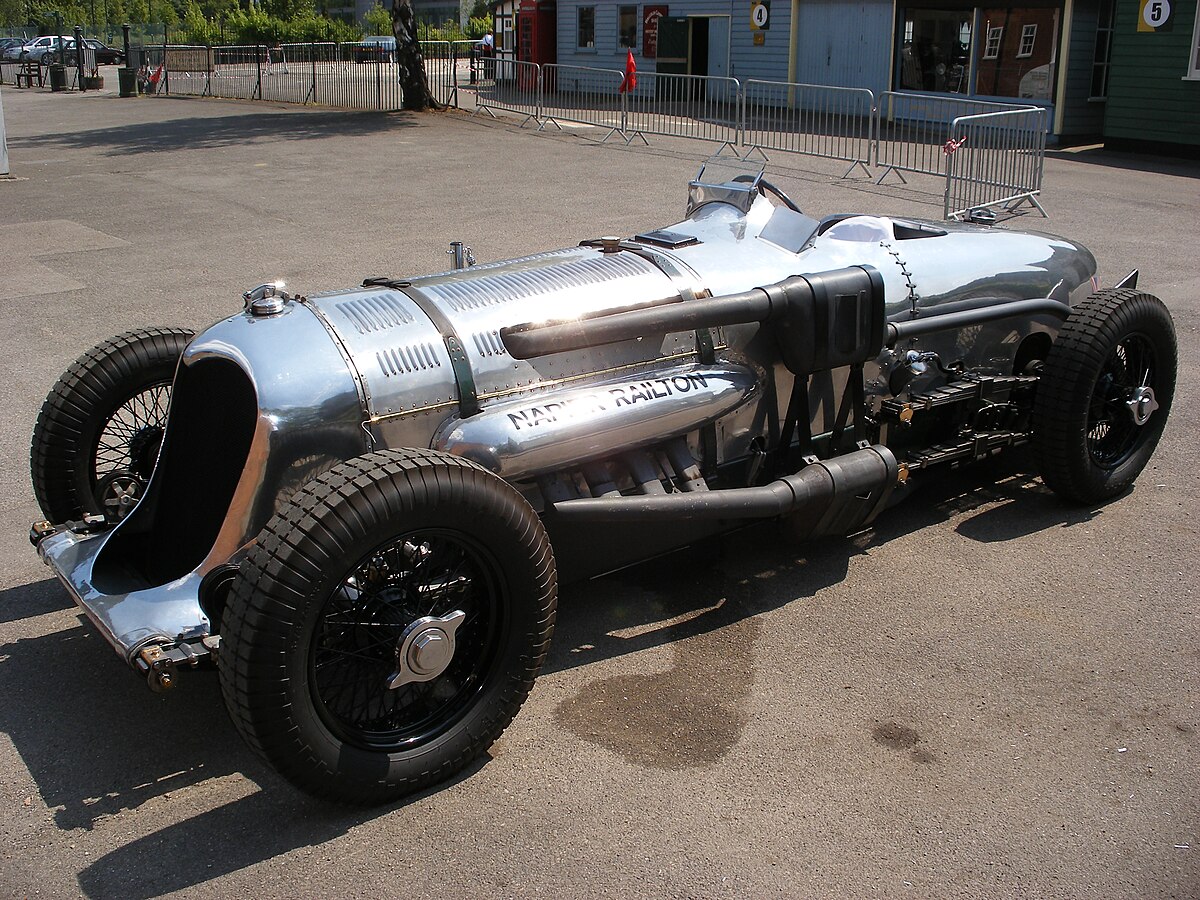
One of the standout features of the Napier-Railton is its triple-bank engine layout. The 24-liter Napier Lion engine produced 580hp, enabling the Railton to reach a top speed of 168mph. However, this performance came at the cost of fuel efficiency, with the car averaging only 5mpg.
Currently, the Napier-Railton is owned by the Brooklands Motor Museum and is a regular participant in the annual Goodwood Revival.
When I was a boy, John Cobb left a lasting impression on me, not just because of his racing achievements, but because of the cleverness he exhibited in his approach to the sport. Cobb wasn’t just a great racer; he set the lap record at Brooklands, achieving an astonishing average speed of over 143mph.
The fact that he managed to hit such a speed on such a rough track surface is truly remarkable. This record, which he set in 1935, still stands today, as the track fell into disuse during the Second World War.
Cobb’s brilliance extended beyond just his driving. What impressed me most was how he collaborated with Reid Railton, giving him full creative freedom in designing the record-breaking car. Railton, a genius in his own right, quickly recognized the fundamental challenges faced by land speed record cars.
He knew that for stability, these cars had to either be front-wheel drive or four-wheel drive; anything else would compromise control. It was the design of Railton’s Mobil Special that allowed John Cobb to set the Land Speed Record at 394.7 mph (635.2 kph) in 1947—a record that stood for an impressive 16 years. I consider this one of the greatest cars ever built.
In fact, when Bamford’s asked me to become involved in the JCB Dieselmax project, I had no hesitation in taking Tim Leverton (the designer) to the Museum of Science and Industry in Birmingham, UK, to see Railton’s Mobil Special. Some of the design concepts for the JCB car were directly inspired by Railton’s work. I can’t think of a higher compliment to give than that.
The Campbells also played a significant role in land speed record history. Sir Malcolm’s achievements were steady and methodical, as he developed a car that gradually reached speeds from 150mph to 301mph, which was a remarkable accomplishment.
However, his cars were relatively conventional and aligned with the Brooklands culture, while Cobb’s car was unique in that it had four independently driven wheels. Donald Campbell, on the other hand, was a true pioneer, achieving the incredible feat of holding both the land and water speed records in the same year.
His Bluebird CN7 was an absolutely stunning machine, though, in my opinion, he was unlucky in that it was the wrong car for the time. While Campbell was still working on a wheel-driven car, the Americans were advancing with jet-powered vehicles.
It’s important to remember that the Korean War played a role in making jet engines available to civilians. War often results in a surplus of military equipment, such as jet engines, becoming accessible to people like Art Arfons, Craig Breedlove, and, eventually, me.
Both Arfons and Breedlove deserve full credit for taking advantage of this technology, not only for driving their cars but also for designing and building them, which is the ultimate accomplishment. In my case, I was able to finance and drive Thrust 2, but the design and construction were the result of the entire team behind me.
Looking ahead, I believe the future holds something incredibly special for me—the Bloodhound Project. My primary goal is to inspire the next generation to pursue careers in science, engineering, technology, and mathematics by showing them how these fields can be applied to achieve extraordinary feats, such as the 1,000 mph land speed record with Bloodhound.
The rules governing the FIA Land Speed Record are minimal, which means that the challenger cars often end up being quite different from one another. Since the technology used in these cars is unlikely to be of direct use to competitors, there’s no need to keep it secret.

